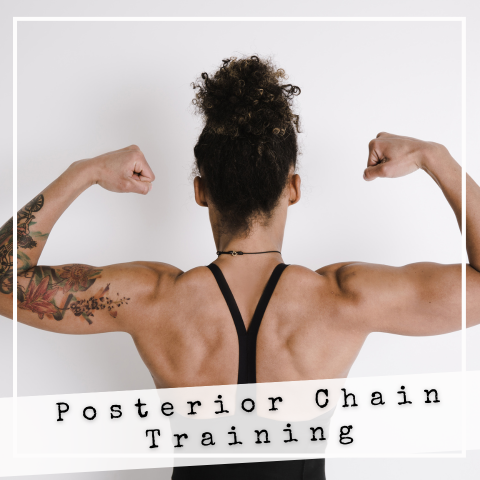Enviado por Melissa Vidito el

The posterior chain is a group of muscles that run along the back of the body, from the neck to the calves. It includes the glutes, hamstrings, erector spinae, lats, rhomboids, and calves. The posterior chain is responsible for many important movements, including hip extension, knee flexion, and plantar flexion. It is also important for posture and stability.
There are many benefits to training the posterior chain, including:
- Improved athletic performance: The posterior chain is essential for generating power and explosiveness. By training the posterior chain, athletes can improve their speed, jumping ability, and throwing power.
- Reduced risk of injury: A strong posterior chain can help to protect the body from injury. This is especially important for athletes, but it is also important for people of all ages and activity levels.
- Improved posture: A strong posterior chain can help to improve posture by pulling the shoulders back and keeping the spine aligned. This can help to reduce pain and discomfort, and it can also make you look and feel more confident.
- Increased strength and muscle mass: Training the posterior chain can help to increase overall strength and muscle mass. This can lead to improved body composition and a stronger metabolism.
Exercises to train the posterior chain
If you are new to posterior chain training, it is important to start slowly and gradually increase the intensity and volume of your workouts. You should also focus on compound exercises that work multiple muscle groups at once.
A good way to start is to include one or two posterior chain exercises in each of your workouts. You can also do a dedicated posterior chain workout once or twice a week.
Here is a sample posterior chain workout:
- Deadlifts: 3 sets of 5-8 repetitions
- Pull-ups: 3 sets to failure
- Hamstring curls: 3 sets of 10-12 repetitions
- Calf raises: 3 sets of 15-20 repetitions
You can adjust the number of sets and repetitions depending on your fitness level. Be sure to warm up before each workout and cool down afterwards. Training the posterior chain is an important part of any fitness routine.
